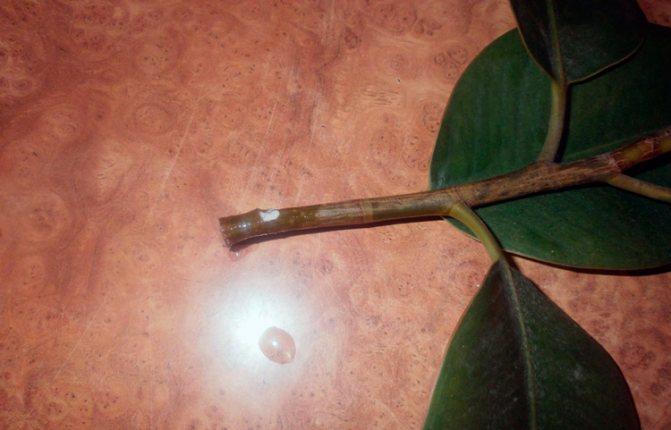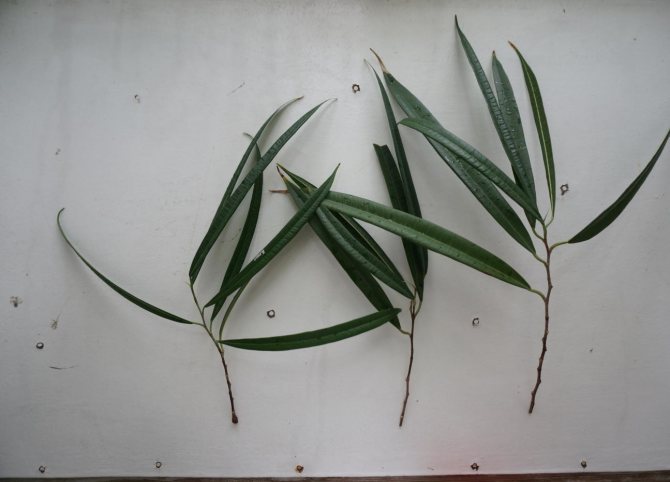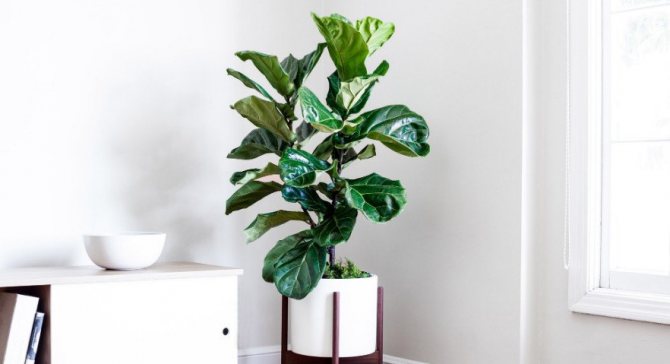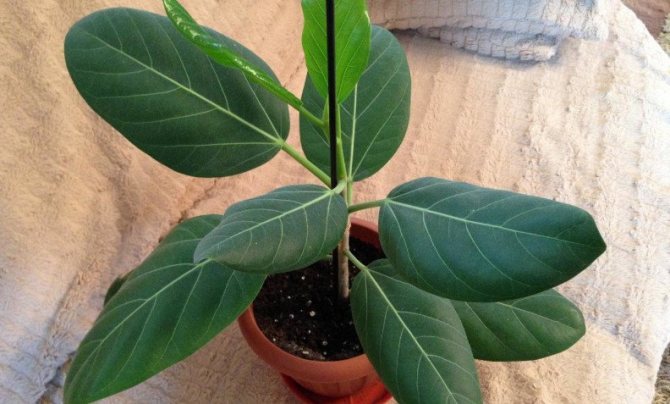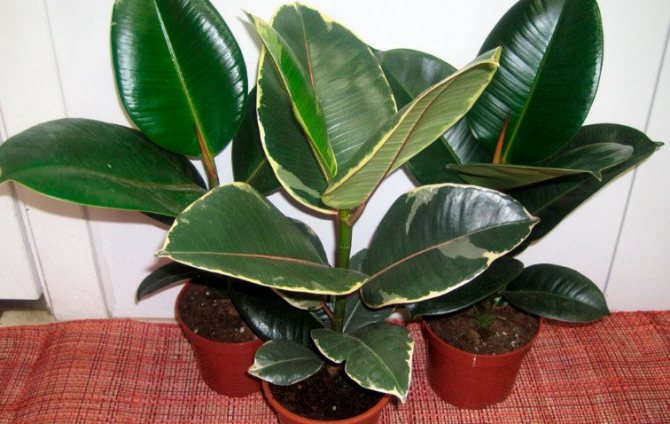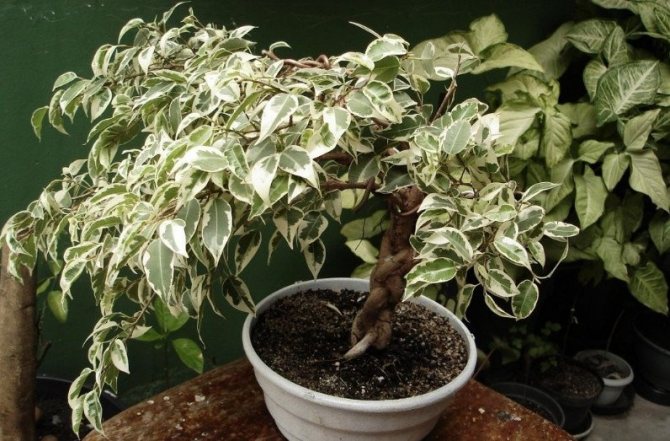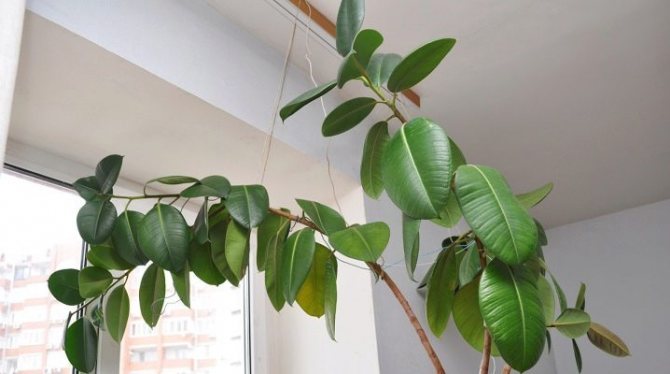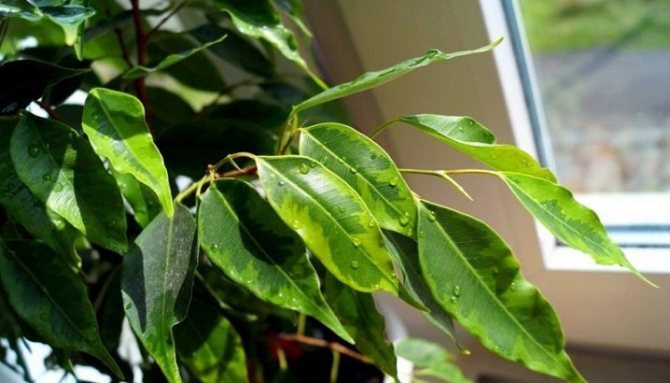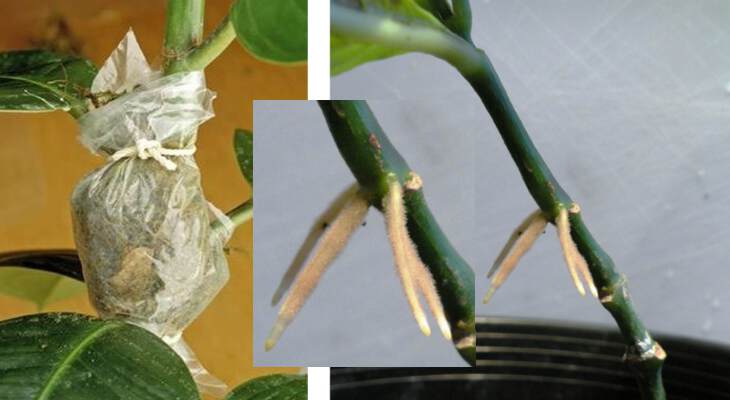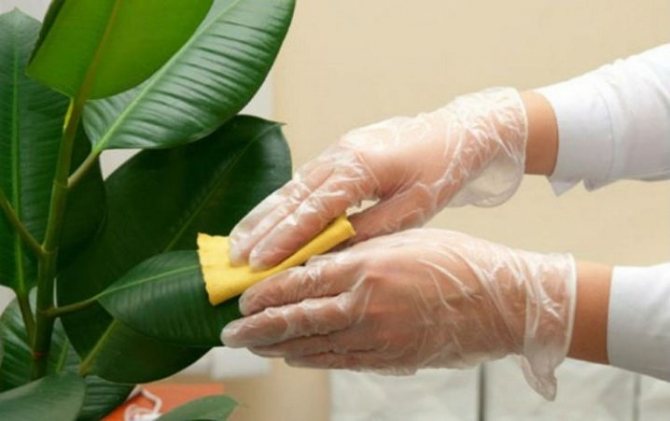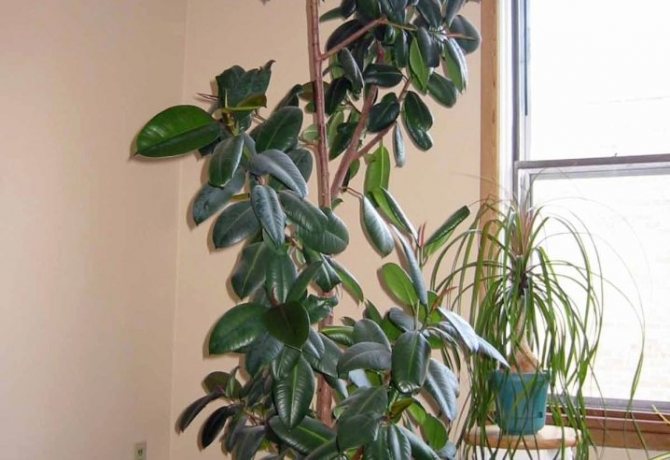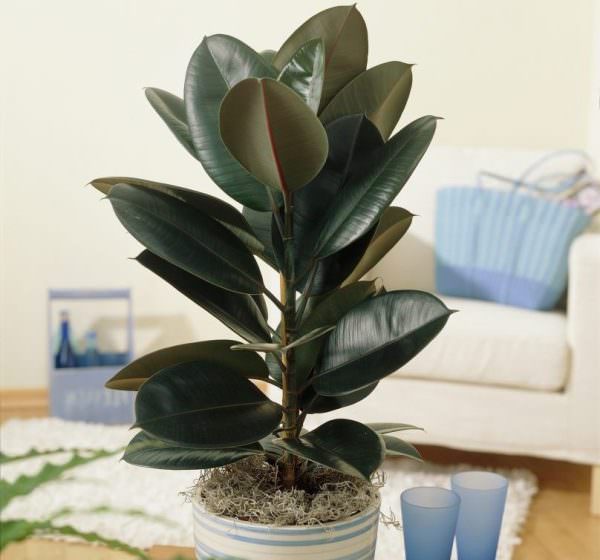
At different times, ficus adjoins us in houses and apartments, enlivens the interior and brings a light touch of antiquity into it. Ficus is very popular with flower growers, because it does not cause a lot of trouble even for beginners and inexperienced ones, you just need to follow the stages of cultivation and take into account the small nuances of this process.
Ficuses grow and develop best in spring and summer. In this article, we will tell you how to grow a ficus in different ways: from a leaf, from a shoot in water, from a shoot, planting directly into the ground.
For propagation by a shoot, you need to cut off a stalk about 15 cm long at an acute angle. The cutting should be immersed in warm water for a couple of hours and cut with wood ash. This is done so that the juice that stands out on the cut does not have time to clog it, as this can hinder the formation of young roots.
Reproduction by shoots in water
Ficus can be grown from a shoot in water. To do this, cut off a piece of the stem with two leaves. The lower leaf should be removed, and the upper one should be reduced by 1/3 and we will blot the juice with a napkin. We place the stalk with two leaves in water, poured into a dark dish, so as not to overheat. The stalk must be placed in water so that the lower leaves do not touch it. Small pieces of charcoal or activated carbon tablets must be added to the water. Water is added as it evaporates. For a month, the scion should be warm and exposed to light, but not in direct sunlight. With the appearance of roots, cuttings must be planted in separate containers.
Planting ficus: step by step instructions
Before planting the shoot, it is necessary to prepare the tools and the ficus shoot itself, and for normal rooting, you must adhere to the recommendations.
Attention! The instruments must be sharp and must be treated with alcohol before use to avoid contamination at the cut site.
How to take a scion.
The stalk is cut in the spring-summer period, its size should not be less than 12 cm and more than 16 cm. The cut is made at an angle using a sharp knife, this is necessary for better rooting.
Rooting of the shoot.
- In order for the cut offshoot to give roots, it can be placed in water, after adding an activated carbon tablet there.
- If the shoot will root directly into the ground, the cut must be pre-processed. The ficus secretes a milky sap, which has a sticky structure and clogs the cut, preventing the roots from coming out. Therefore, the appendix should be placed in warm water for 2-3 hours, and then the cut site should be treated with crushed charcoal or activated carbon.
- Drainage 1-2 cm thick should be poured onto the bottom of the pot, it is advisable to cover it with moss on top, this will protect the young plant from bacterial rot.
- Fill the pot with prepared soil by a third, make a small hole in it and place the process there, filling the free space with the substrate. The soil should be loose and light, otherwise the plant will not be able to take root, you should not tamp it either, this will disrupt the air exchange in the pot.
- The planted ficus shoot must be covered with a plastic cup or plastic bag on top, thus building a mini greenhouse. This will maintain the necessary moisture and a constant temperature for rooting.
- As soon as a new leaf appears after 3 weeks, the greenhouse can be opened daily for 2-3 hours, so the young ficus adapts to the external environment and hardens. After a week, the greenhouse can be removed completely.
A properly rooted shoot will noticeably grow and in 2-3 months will give several new leaves. If the shoot was previously rooted in water, as soon as it releases roots, it can be transplanted into a pot, following the same scheme.
How to plant a ficus with a broken off process, without roots.
It often happens that the shoot is specially broken off from the main plant in order to breed the ficus at home. If the process is broken off and it has no roots, you need to make an oblique cut below the bud or internode, and remove the lowest leaf.
Place the shoot in a glass of water, it is better that the vessel is dark in color, this will protect the water in it from excessive heating and create conditions for the root of the shoot. When the ficus shoot gives a root, it can be transplanted into a pot of soil.
Reproduction by shoots in the ground
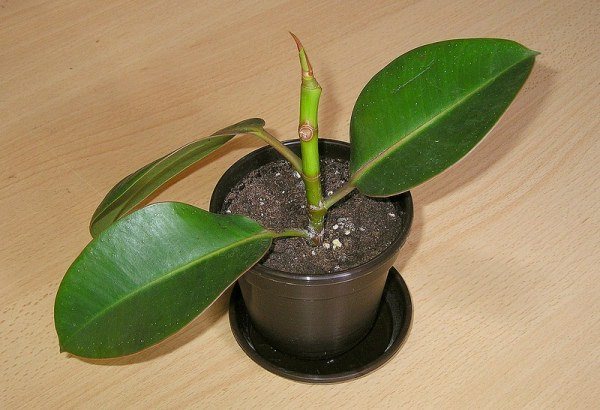

Another shoot can be planted directly into the ground. This is done immediately after you process the cut. The shoot is planted in a pot filled with an earthen mixture, loose and light. Using a plastic bag, glass jar or transparent plastic cup, we make a mini-greenhouse in which the temperature and humidity are easily maintained. After 20 days, the rooting process will go and the cutting will start to grow. The proof of this will be the appearance of the first leaf. Do not rush to immediately clean the mini-greenhouse, just open it more often so that the young plant can gradually tame to the usual conditions of detention.
Preparatory procedures
Florists and lovers of home cultures opt for ficuses due to the fact that this flower is completely unpretentious in care and does not require specific conditions.
Before planting the ficus, preparatory procedures are carried out, which are of great importance for the success of the operation.
The planting of a ficus developing from a shoot is considered safe and easy to perform. Initially, you will need a clean, sharp instrument, such as a knife or blade, and an open container of warm water.
Read also: What can be planted after strawberries in spring
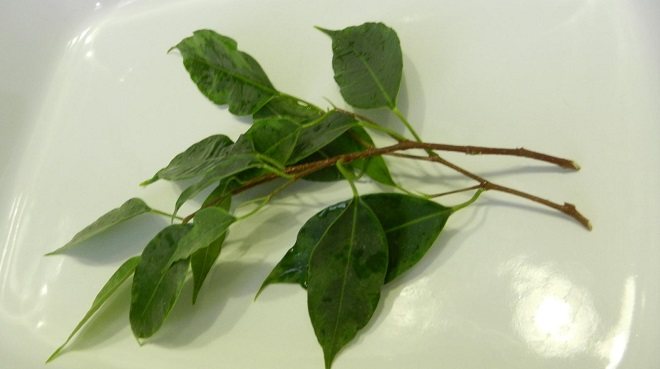

On the selected process, there must be one or more viable buds and leaves, which is the key to the successful completion of the procedure. Planting is carried out preferably in the spring and summer, since the conditions are most favorable during these seasons. A stalk is cut from an adult and completely healthy bush. It is important to know that its size should not exceed 15 cm. The cut is made at an acute angle.
Important! Cutting with scissors or attempting to gently break the branch will result in prolonged flower recovery as well as slow rooting of the new plant.
The cut off shoot is placed in a container with water for 1.5-2 hours. After that, the sections are sprinkled with coal powder or treated with special antiseptics.
In addition to installing the cutting in water, the following method is also practiced. Small tops of a flower, for example, ficus benjamin, are wrapped with bases in cotton swabs soaked in water with a mixture of fertilizers. These structures are installed in a saucer with a small layer of water. In this position, the stalk can remain for a long time until the first roots appear. Then it is strengthened in a pot.
Leaf propagation
In addition, a ficus can be grown not only from a shoot, but also from a leaf. Just do not forget that if you just cut off a leaf of ficus, plant it in the ground or place it in water, then it will have roots, and it will grow, but it will never be a full-fledged plant.
To grow a full-fledged specimen from a leaf, it must be cut with a small piece of the stem.The bottom cut should be in the middle of the node below the required sheet and be oblique. Leaves for planting should be taken from the main trunk or from the side stems.
You need to cut the leaves with care, since the juice that is released during cutting is poisonous. Do not allow it to come into contact with the skin and mucous membranes - this can cause burns.
To remove the juice, the cutting should be held in running water.
The cut stalk should be dried and rolled up the sheet with a tube, tying it with a soft thread. Then, you need to take a strong stick, the length of which should be larger than the cutting and stick it into the rolled sheet. We stick the stick into the pot in the soil - here it will feel secure.
How to plant a ficus
To plant ficus at home
, there are several ways, but the most popular is the rooting of the shoots.
Planting soil
In order for the prepared ficus shoot to take root well, you need a suitable soil for the ficus, which can be purchased at the store or prepared on your own:
How to plant a ficus photo
- it is necessary to take peat, perlite and vermiculite in equal parts;
- mix well;
- add river sand without clay admixture in a ratio of 1: 3;
- prepare drainage, for this purpose you can use expanded clay or pebbles.
The main requirement for the soil is that it should not be heavy and greasy, the ficus prefers loose, nitrogen-rich soil.
How to choose the right pot
The shape and size of the ficus pot is of great importance. The root system forms quickly enough, so when choosing a pot, you need to adhere to some rules:
The shape and size of the ficus pot
- the size of the pot in diameter should be 2-3 cm larger than the root system of the ficus;
- when planting, it is necessary to ensure that the roots do not rest against the walls of the pot, a gap of 2.5 cm should remain, this must be taken into account when choosing a pots;
- it is better to choose a plastic or earthen pot;
- the depth of the pot should be sufficient, wide, but small pots will not work;
- the most important requirement is that the ficus pot must have medium-sized drainage holes, small ones will not work - the liquid will stagnate, too large will cause insufficient soil moisture.
Important! Ficus grows quite quickly, especially the rubbery species, so the pot must be chosen stable and heavy, the best option is ceramic.
Propagation by air layers
Ficus can also be propagated by air layers.
To do this, at the top of the main trunk or on its lateral processes, through a couple of leaves, it is necessary to make a small incision for 1/3 of the stem. A stick or match should be inserted into the incision so that it does not overgrow. The incision must be overlaid with moss, and tied with cellophane on top. Moss needs to be moistened from time to time to keep it slightly wet all the time. A month after the appearance of the roots, the cutting is cut and planted in a separate pot. The shoots that were planted in the first half of spring take root better and faster.
Fertilizing ficus after planting
Immediately after planting, the ficus is not fed, the plant is under stress and must fully adapt to the new environment. Top dressing should be applied only a month after planting in a pot, for the first time the plant has enough nutrients in the substrate.
It is better to use liquid ready-made fertilizers for evergreens, they contain nitrogen, phosphorus and potassium. Top dressing is applied after watering in accordance with the dosage specified in the instructions.
Having studied all the rules for planting a ficus at home, you can easily breed different types of plants. And compliance with the rules of care will allow you to grow a healthy plant.
Ficus in any of the seasons perfectly coexists in a room with other indoor flowers and enlivens the atmosphere in it. Planting a ficus plant in a pot is not so difficult if you know how the plant reproduces. Ficus is very popular with flower growers, since its cultivation at home is quite within the power of even beginners in this business. It is only necessary to adhere to the growing stages, while taking into account the small nuances.
These plants develop best at home in the spring and summer. First, you need to decide in what way the reproduction will take place: by a shoot, an air layer, a leaf or cuttings.
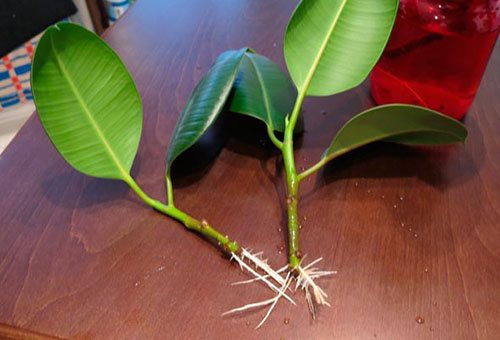

Propagation by cuttings
Unlike rubber ficus, Benjamin's ficus propagates only by cuttings... The most favorable time for this is all spring and summer in the first half of it. At this time, there is an active formation of roots and leaves.
For rooting, it is necessary to take the tops of the shoots. It is easier to get a slender tree from them. The middle part of the twigs is also well suited for propagation by cuttings. In this case, buds begin to develop in the leaf axils, and the cutting begins to branch. If you plant several rooted cuttings in a container, then after a while you can get a beautiful lush bush.
What cuttings are suitable
And, in any case, do not cut off long cuttings. There are a lot of leaves on them, so moisture evaporates too intensively, and the stalk without roots will wither very quickly.
There should be from 3 to 4 nodes on the handle (this is the place on the shoot where the leaf grows from). Slices on cuttings must be slightly dried (this will reduce the possibility of decay), and then placed in water or in a substrate. Rooting of the cutting should be carried out in a warm place and in the light, in a room where there are no direct rays of the sun.
In water
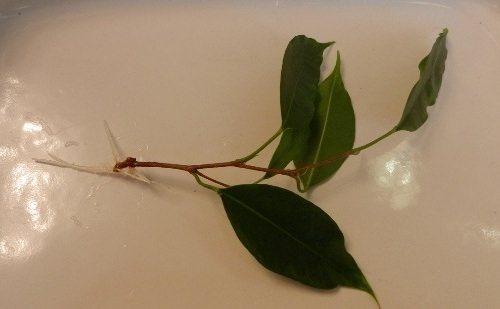

Most pets take root with ease in water. For this, well-settled tap water is recommended. If the stalk in a container of water feels good and does not rot, then it should not be changed. You can only add fresh water.
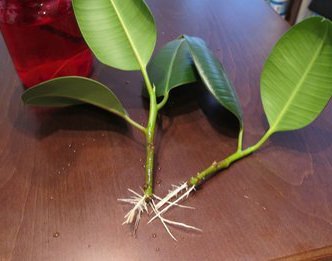

When the roots on the cuttings develop well, they must be planted in a pot with soil and watered well. The second watering must be done only when the soil in the pot dries well.
Output
At home, for a comfortable existence, the ficus needs proper care and certain knowledge from the owner of the plant. However, ficuses grow successfully even in public places, and even more so in an apartment.
So, the following conditions are the keys to successful adaptation of a plant brought home:
- average indoor humidity;
- lack of drafts;
- placing the pot away from the battery;
- protection of the plant from direct sunlight.
For the proper development of a young potted plant, breathable, fertile soil, moderate watering and timely feeding are necessary.
An interesting and favorite house plant - ficus, brings comfort and tranquility to the interiors. There are 12 varieties of such pets. At home, they grow and develop well. In this article, we will reveal the question of how to plant a ficus correctly.
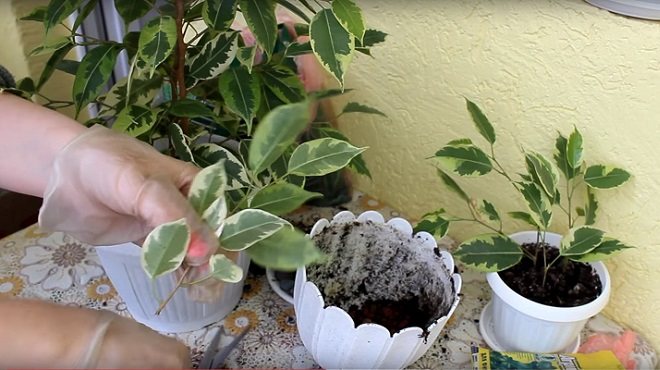

Watering
I would like to pay special attention to watering the ficuses. As you know, ficus is a moisture-loving plant and requires abundant watering, but only after the soil in the pot dries well. When watering the ficus, it is necessary to moisten the entire earthen lump so that water gets into the pan through it. Just do not forget to drain it after a while (20 minutes) after the end of watering.
Summer and winter watering
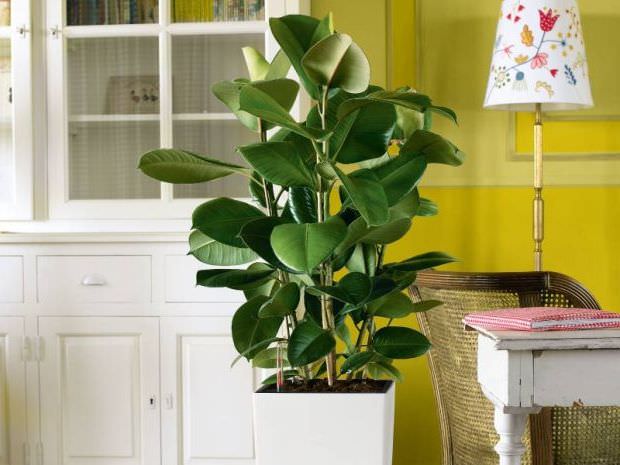

In the summer, when there is intensive growth, the ficus needs much more water than usual. In winter, watering should be reduced to once every 1.5-2 weeks.
Water for irrigation should be 1-2 degrees warmer than indoor air. Tap water contains calcium salts and chlorine, which are very harmful to plants, therefore, before using it for irrigation, you need to boil it, clean it or stand it for a day..
Plant care and feeding
Ficus is an extremely unpretentious plant that feels great in a small shade. The optimum temperature for ficus in winter is 20 degrees Celsius; in summer, the plant can withstand higher temperatures. But do not allow the plant to be indoors at temperatures below 12 degrees.
Feed the plant in the spring and summer (until the beginning of autumn) once every 2 weeks. It is recommended to use the following products as a natural fertilizer at home:
- nettle infusion;
- wood ash;
- mullein.
You can also buy specialized fertilizers for ficuses at a flower shop. Suitable "Rainbow", "Ideal", "Giant", "Uniflor growth" and others. Feed the plant carefully and avoid high doses of fertilizer.
Sometimes the leaves of this plant may begin to fall off. This usually happens due to a change of location or over-watering. In this case, the roots of the ficus begin to rot, and the leaves themselves lose their vitality. If the soil is too damp and there is water in the sump, reduce the frequency of watering.
If you moved the ficus to another place in the room, then the plant may experience shock at the same time, hence the dropping of leaves. Be sure to monitor the level of illumination in the apartment. With a lack of light, the plant will grow slowly. If there are drafts in the room, then this plant will also not feel very well.
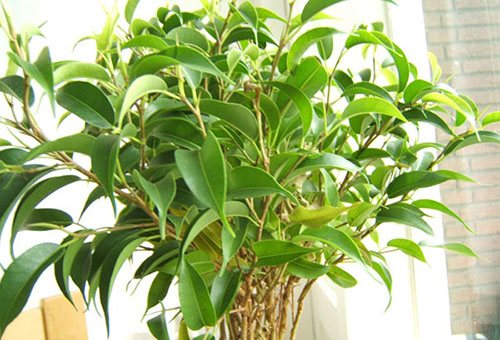

Features of the
"Elastica" is very often used as a houseplant. According to legends, it is responsible for family well-being in the house where it grows. This plant is very popular in its homeland - in India and southern Indonesia. If "Elastica" grows in natural conditions, then its height can reach 30 meters. An evergreen tree will be a worthy decoration for your home.
Rubbery ficus very often grows in breadth due to the presence of aerial roots. They form on the branches and trunk of the tree, eventually grow into the soil, giving the plant a shape called a banyan tree. With the help of such ingrowth, the plant receives additional nutrition. Locals gave this plant the name "snake tree" because of the aerial roots that wriggle like snakes.


Elastica leaves have a dark green hue. They are rather large, elliptical in shape with sharp points towards the top. There are also stipules of red-brown color, they are usually presented on young leaves, since as soon as they begin to unfold, the stipules fall off. Flowers are usually not considered by growers, as they are quite rare.... Usually they appear on the plant only during pollination, and then this process must be performed by certain insects.
Usually the plant does not bloom at home. Ficus blooms can only be seen in the mature stage of development, if it grows in the garden.
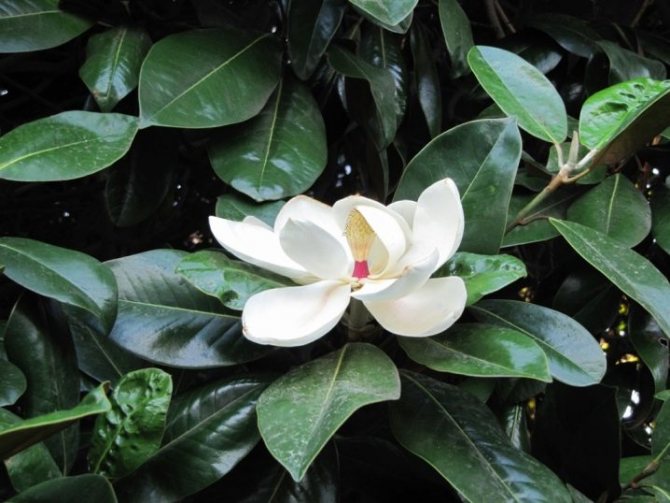

Ficus rubber fruits are represented by syconia (spherical berries), which are only 1 cm in diameter. In appearance, they have much in common with figs. Previously, the plant was grown to obtain milky juice, because it was it that was used in the production of rubber. It is worth noting that the juice of this plant can provoke skin irritation, the manifestation of allergic reactions and even lead to dermatitis. Milky juice contains not only latex, but also alkaloids and enzymes. This juice is very useful for ficus, because it heals various wounds with it.
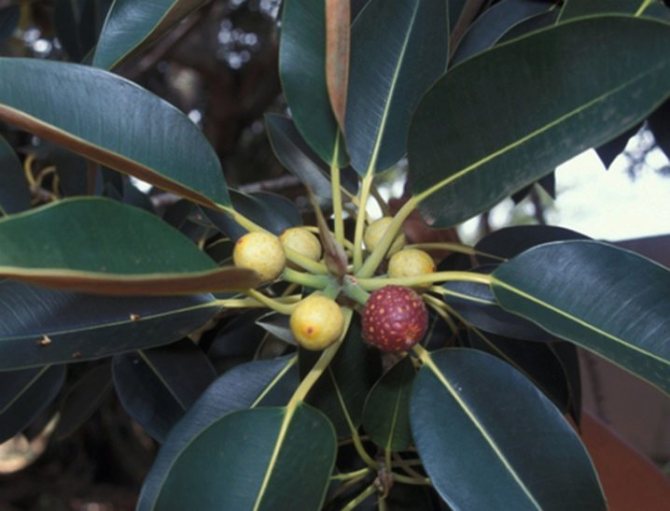

Usually, at home, the height of a rubber-bearing ficus does not exceed 2 meters. If you create optimal growing conditions for a plant, then in 1 year it will grow in height by 40–45 cm.If the plant has already reached the ceiling, then you can stop its growth by trimming the top. Usually, when grown at home, the tree has a small number of side shoots.
A striking representative of the rubbery ficus is "Robusta". This plant is characterized by power and strength, as a result of which it received this name. Breeding this variety is not difficult, since the plant can be propagated in several ways, and each gardener can choose the optimal solution.
Even a beginner can handle the cultivation of rubbery ficus.
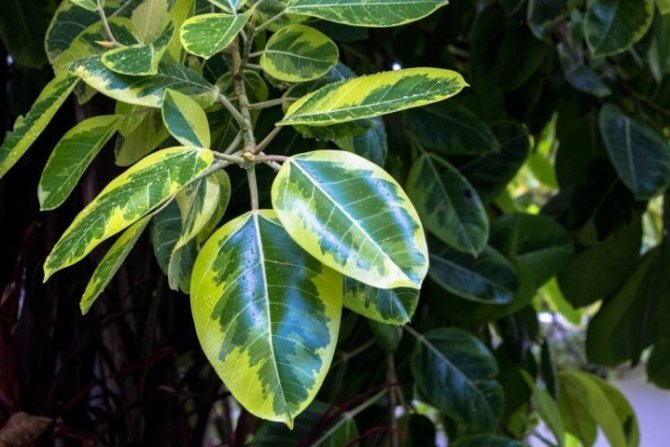

Care after landing
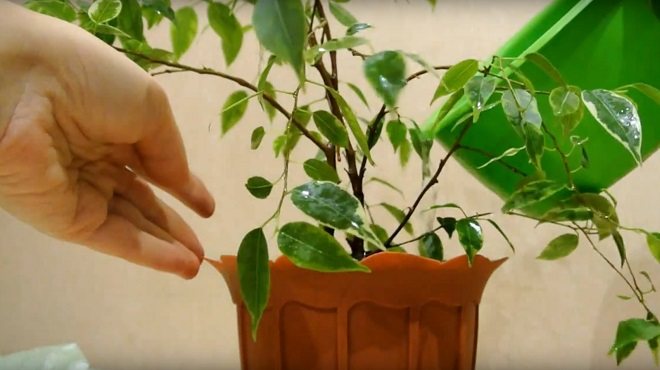

Since planting is recommended in spring or summer - during a period of very high average daily temperatures, watering plays an important role, which is carried out 2 times a week.
Excessive watering leads to decay, so it is important to closely monitor the amount of liquid applied. The location of the pot with a young cut is also important. A young flower is harmed by drafts, and moisture with sunlight is beneficial. At the same time, direct sunlight is detrimental to a young plant. To avoid drying, create diffused lighting.
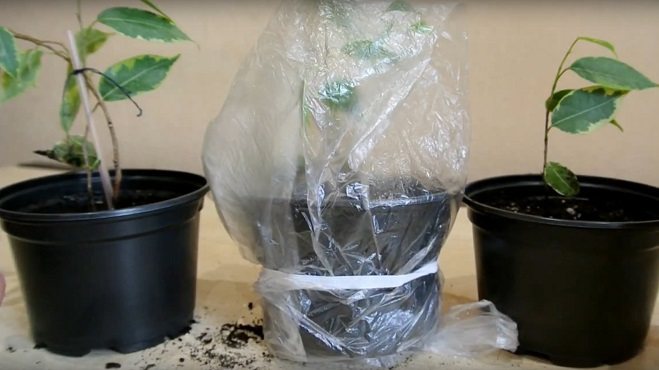

Since planting a ficus with a shoot is not difficult, the emphasis is on leaving after rooting. In some cases, a greenhouse is organized. For this, the upper part of the container is covered with cellophane, or a plastic container, which allows maintaining a constant temperature and humidity inside the system.
The temperature and quality of the water used for irrigation play an important role. Experienced growers recommend soft warm water. Usually hard water flows from the tap. To soften it, boil it, or stand for a day.
The average temperature at which all vital processes in the flower are at a good pace, and development is progressing according to the schedule: + 25 ° C.
It takes from 2 to 4 weeks before the first roots appear. In this way, it is convenient to propagate ficus at home.

